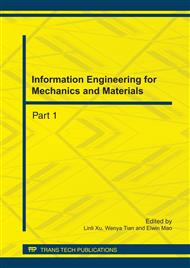[1]
ZHANG QS. Attaching importance to science and innovation in the processing and utilization of bamboo timber in China. Journal of Zhejiang Forestry College, 20(2003) 1-4.
Google Scholar
[2]
Baumann MG, Lorenz LF, Batterman SA Aldehyde emission from particleboard and medium density fiberboard products. Forest Prod 50 (2000) 75-82.
Google Scholar
[3]
Felby C, Lars SP, Nielsen BR. Enhanced auto adhesion of wood fibers using phenol oxidases. Holzforsehung 51(1997b) 281-286.
DOI: 10.1515/hfsg.1997.51.3.281
Google Scholar
[4]
Felby C, Olesen PO. Enzymatic bonding systems. In: Prase P N (eds). Science and Technology of Polymers and Advanced Materials. Plenum Press, New York, (1998).
Google Scholar
[5]
CAO YJ, DUAN XF, CAO YL, LÜ JX. Effect of Laccase Treatment Conditions of Lignosulphonate on Shearing Strength of Plywood. China Forest Products Industry 34 (2007) 14-17.
Google Scholar
[6]
ZHOU GW, LI JN, CHEN YS, ZHAO BL, CAO YJ, DUAN XF, CAO YL Determination of reactive oxygen species generated in laccase catalyzed oxidation of wood fibers from Chinese fir (Cunninghamia lanceolata) by electron spin resonance spectrometry. Bioresource Technology 100(2009).
DOI: 10.1016/j.biortech.2008.06.010
Google Scholar
[7]
CAO YL, GUO P, XU YC, ZHAO BL. Simultaneous detection of NO and ROS by ESR in biological systems. Methods in Enzymology 39(2005) 387-394.
Google Scholar
[8]
FELBYC, NIELSENBR, OLESENPO, et al. Identification and quantification of radical reaction intermediates by electron spin resonance spectrometry of laccase-catalyzed oxidation of wood fibers from beech. Applied Microbiology and Biotechnology. 48(1997).
DOI: 10.1007/s002530051080
Google Scholar
[9]
Capani F, Aguirre F, et al. Changes in reactive oxygen species (ROS) production in rat brain during global perinatal asphyxia: an ESR study. Brain Research, 914(2001) 204- 207.
DOI: 10.1016/s0006-8993(01)02781-0
Google Scholar
[10]
JIN CD, WANG J, MAO SF, YE JW, DU CG, SUN FL, DUAN XF. Reactive oxygen species free radical treatment of bamboo flour: Effects on Bamboo Flour Panel Properties [J]. Journal of Beijing Forestry University, 31(2009) 119-121.
Google Scholar
[11]
WANG GH, JI LC. CATALYZED OXIDATION USING RHUS LACCASE Ⅰ: Formation of 3,5-di-tert-butyl-o-benzoquinone from 3, 5-di-tert-butyl-catechol. JOURNAL OF WUHAN UNIVERSITY (Natural Science Edition), 4(1989) 106-108.
Google Scholar
[12]
Kumsnotani J., Kato T. and Hikosaka A. Laccase-catalyzed polymerization of urushiol in precisely confined Japanese lacquer system. Sci. Part C., 23(1968) 519-523.
DOI: 10.1002/polc.5070230209
Google Scholar
[13]
H.E. Schoemaker, P.J. Harvey, R.M. Bowen, et al. On the mechanism of enzymatic lignin breakdown. Federation of European Biochemical Societies Letters, 183(1985) 7-12.
DOI: 10.1016/0014-5793(85)80942-x
Google Scholar


